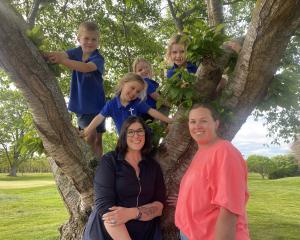
But in Ecan’s proposal for a new regional pest management plan, new "Good Neighbours rules", for broom, gorse, old man’s beard, Nassella tussock — and the Bennett’s wallaby — would apply to "all landowners, including the Crown", he said.
Wallabies caused biodiversity decline and had an impact on production.
"They deplete the forest understory and prevent regeneration of native bush. They also feed on green feed crops, especially where these border suitable cover," he said.
"Historically, wallabies were contained in a 900,000ha ‘containment area’, which is centred in the Hunter Hills, but includes the Two Thumb Range and the Kirkleston and Grampian mountains. Populations also occur in Kakahu Forest near Geraldine and Pioneer Park southeast of Fairlie.
"More recently, wallabies have spread outside the containment area.
"It’s important that everyone plays their part to stop cross-boundary spread. Outside the containment area, Environment Canterbury and the Otago Regional Council are working together to stop the spread further south and push wallabies back into the containment area."
In a press release from Ecan this week, Cr Peter Skelton said "everyone has a part to play in reducing the impact of pests".
"We all want to protect biodiversity and production activities from the impact of pests, be able to better respond to pests as soon as they get here, and be better equipped to respond to changes in climate and land use, new tourism opportunities, changes in freshwater habitats and water movement."
The proposed plan states land occupiers within the containment area shown must control Bennett’s wallaby densities on land they occupy to at or below Level 3 on the Guilford Scale. It disallows "enclose or otherwise harbour" any Bennett’s wallaby in or on any place in the Canterbury region outside of the containment area.
The proposed plan prohibits discharging a firearm where a control operation involving bait is being planned or undertaken "to prevent human disturbance of wallaby populations prior to any necessary control operations by [Ecan]".
"For those in South Canterbury," Mr Keeling said, "it’s important that pests elsewhere in the region do not spread south. For example, nassella tussock is found in North Canterbury, but other parts of Canterbury are prone to spread. It’s these types of pests that could move further south if they’re not controlled."
The council lists among its worst pests: Chilean needle grass, old man’s beard, yellow bristle grass, feral rabbits, wilding pines, and wallabies.
The public submission process begins today.











